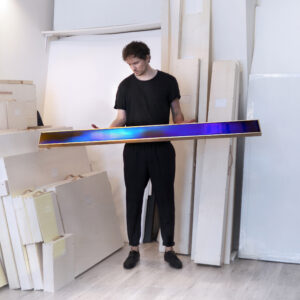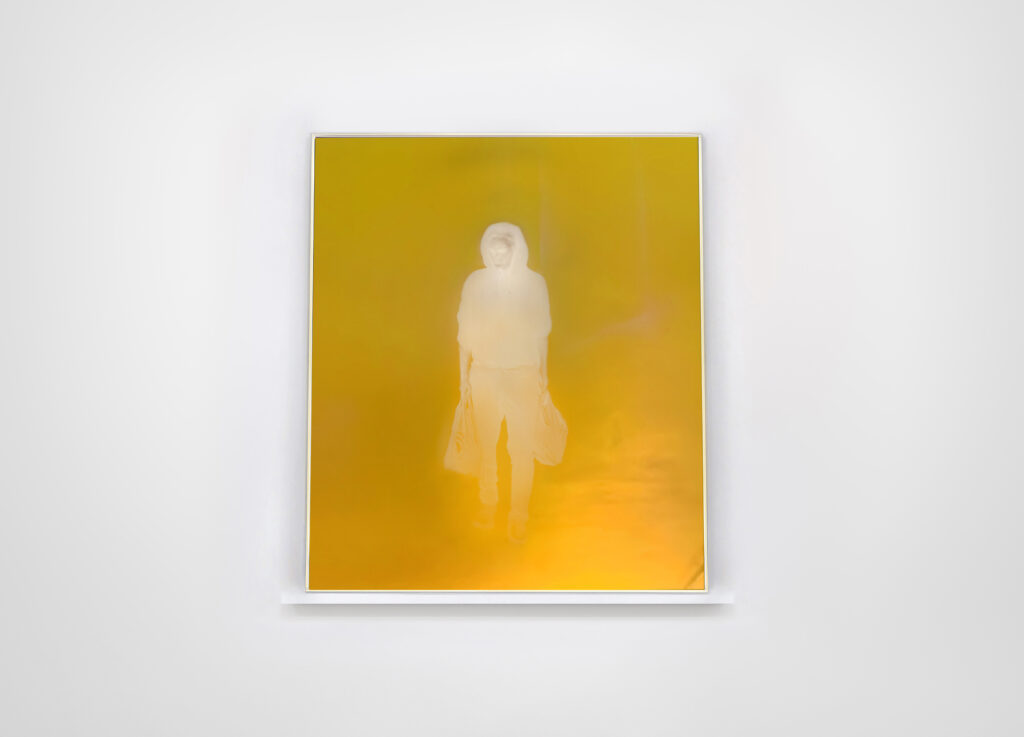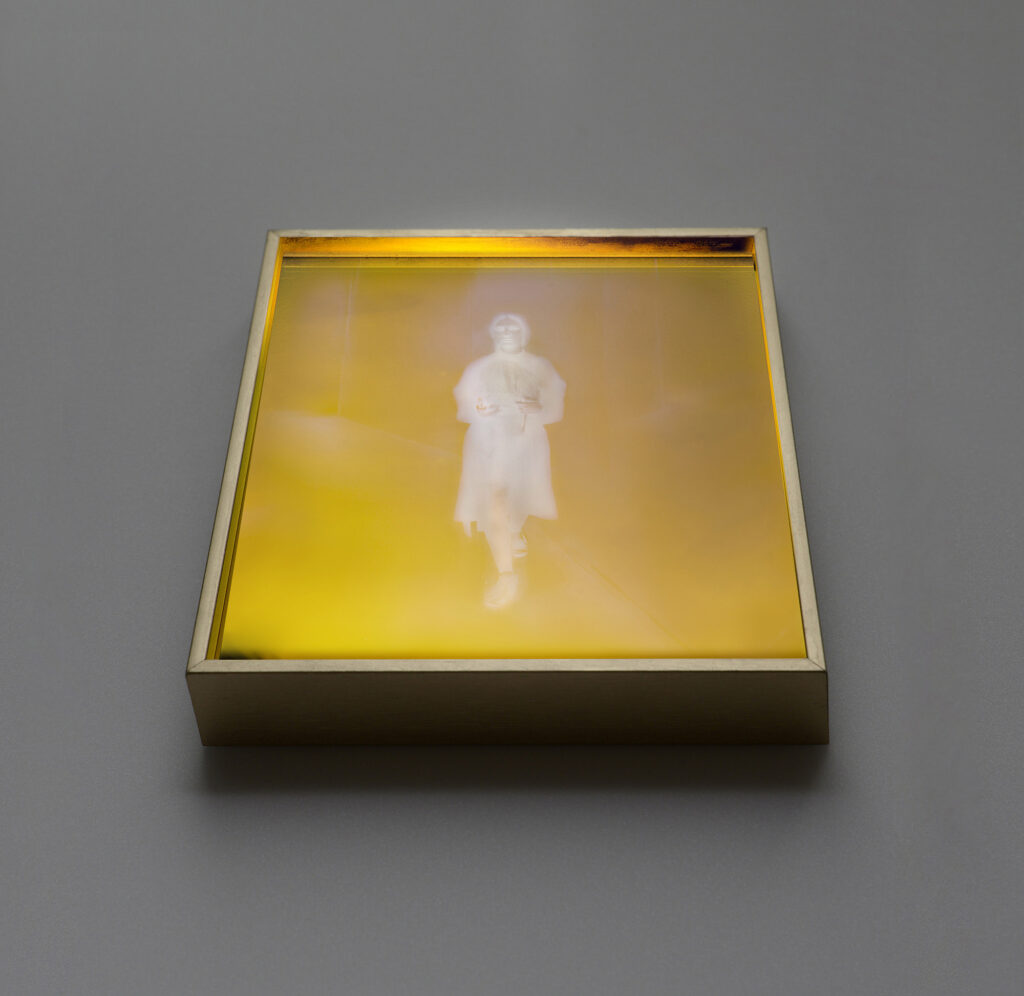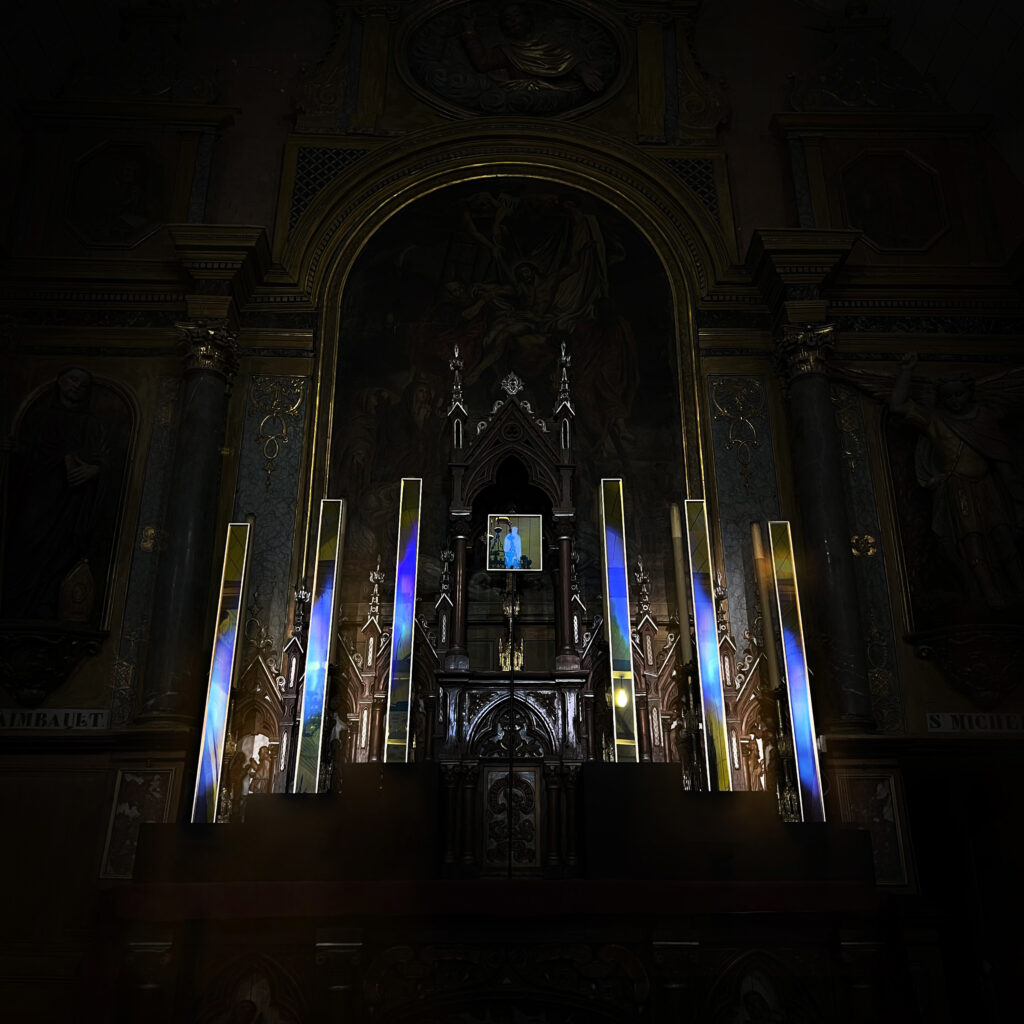In the latest Artist Voice, we focus on one of the highest profile contemporary photographers in France, Thomas Devaux.
Thomas Devaux has been widely noticed for his ground-breaking imagination of the photographic medium. His works have been presented at major international photo fairs including Paris Photo, Photo London, Unseen, etc. In 2013, he was invited to be a panel photographer at The Rencontres d’Arles. His works have been collected by prestigious brands and public collection institutions such as the Bibliotèque National de France, Huawei, LVMH, Fondation Antoine de Galbert in Paris and the Musée des beaux-arts d’Orléans.
In 2021, V&E ART (Paris & Taipei) presented his works at PHOTOFAIRS Shanghai for the first time.

Thomas Devaux
“My work always has a double reading, at once works with a formal approach, and more spiritual works.”
As a visual artist, photographer and cross-media creator, Thomas Devaux, on the basis of photography, is dedicated to exploring and developing various possibilities of this medium. He focused on portrait in his earlier creation, exploring the notions of profane and sacred, with references to the history of religious art. In recent years, with the theme of “Cet Obscur Objet du Désir”, he has developed three series, which are The Shoppers, Rayon, and Dichroics, through which the artist tries to turn the question back to today’s consumerism: Are we living in a social fantasy of over-exquisite packaging while neglecting the essence of daily life?
In creation, Thomas Devaux started shooting from supermarket customers in Paris, then moved to goods on shelves, and blurred vision through certain algorithms to form original colour blocks. Besides, in Dichroics, Thomas Devaux installed Dichroic Glass reserved for materials research carried out by NASA in his creation of abstract photography. The work reflects variations of colour depending on the light or the shades of the viewer’s own clothing, which in turn is a metaphor of customers’ mental statement and how businesses control the consumption of consumers through the display of goods.
Thomas Devaux’s works are both aesthetic and conceptual. Under the jewel-like and glittering appearance, the works are presented to the audience using minimalistic image installations. Thomas Devaux infuses Algorithmic Photography with aesthetic layers of living, showing the unique French aesthetics combining minimalist and luxurious style.

©️ Thomas Devaux, Dichroic Shopper 5.9. Courtesy of V&E ART (Paris & Taipei)
PF: Your artworks are mesmerising. We read you use dichroic glass, which reflects some colours and allows others to pass through it. Can you tell us more about how you use this complex material to create your pieces?
TD: Initially, like many others, I was familiar with the plastic form of dichroic, which can be found, for example, on objects for children. A material that changes colour according to its orientation. But I was looking for a more precious material that would last over time and allow me to work with light in my work. I then discovered this dichroic glass that I now use. It has taken me a long time to really understand the capacities of this material. This glass is the result of NASA research, it has a very high reflectivity index and can therefore be used on satellites or to reflect lasers for example.
The word “dichroic” comes from the Greek word for two colours, so depending on the position of the glass and the light, it changes colour.
In my work Dichroics I have sought to create works that are both attractive and complex. The colours change, they are hard to photograph, and at the same time everyone tries to take a picture of themselves through these mirror-like works.
Technically the dichroic glass is positioned in front of the photographs I make and then encased in a frame that I gild with gold leaf. The light from this glass is then also reflected on the gilding, which adds an almost solar aspect to these works.
PF: Is there any material you’d like to create art with that you haven’t tried yet?
TD: Yes, I have been wanting to work with glass for some years now. This material fascinates me. I am currently trying to develop a sculptural work based on this material.

©️ Thomas Devaux, The Shoppers, 2019. Courtesy of V&E ART (Paris & Taipei)
PF: Your artworks can be interpreted in many different ways, they can be seen as calming, elusive, what do you hope people feel when they look at your artworks?
TD: For the past 15 years, I have been researching the notions of the profane and the sacred. My work therefore always has a double reading, at once works with a formal approach, and more spiritual works.
These works are indeed difficult to capture, and it is very complicated for me to photograph them and then share them in publications.
I love to observe people in front of the Dichroics. Most of the time, after having been surprised by the technique of this glass and the changes of colours, they almost all take pictures of themselves. When they look at these works, they are also looking at themselves. The Dichroics absorb and hypnotise the viewer, creating a very contemplative effect.

©️ Thomas Devaux, Rayon 3.92, 2021. Courtesy of V&E ART (Paris & Taipei)
PF: Your practice really does push the boundaries of photography, how do you see the photographic medium being placed within the wider art scene?
TD: In France, given its history since the beginnings of photography, this practice is very respected. Fifteen years ago, when I really started working with photography and exhibiting my work in galleries, there were a lot of codes that had to be followed. Now formally everything is possible, you can interrogate photography in almost any form and aspect possible, it no longer fazes anyone.
Photography is completely intertwined with contemporary art. In all the big contemporary art fairs around the world, photography is very prominent, as are the images in our world.

©️ Thomas Devaux, Dichroic Shopper 6.3. Courtesy of V&E ART (Paris & Taipei)
PF: We saw Installation Totems was shown at Centre d’Art Contemporain Le Kiosque. This recent piece takes a more sculptural form, much more than your previous artworks. Do you see your practice heading in that way?
TD: During the Nuit Blanche organised by the Centre d’Art Contemporain le Kiosque, curated by Mathias Courtet, I actually created an installation of six Dichroic works in a church. When I started to work on certain Dichroics in a thin, vertical shape that I called Totems, my intention from the outset was to make them into a kind of sculpture. I also wanted to multiply them so that they could be exhibited in the form of installations. One of my references was the stained glass windows in cathedrals and the shape of organs, with these vertical lines that go up and down. In this exhibition organised by Le Kiosque I wanted to achieve an installation that would be both extremely well integrated into the church as well as being very contemporary. The totems reflected very intense yellow rays along the length of the church, immersing the spectators in them and blinding them a little…
I would like to extend this type of installation and actually use the sculptural form to a greater extent in my work.

©️ Thomas Devaux, Installation Totems, 2021. Courtesy of V&E ART (Paris & Taipei)
PF: What are the three key things you keep in mind when creating your work?
TD: For starters, I always make sure that my works or installations have a certain immediacy for me. Each time I create a work, I leave it aside for a few days. Then I look at it with fresh eyes, and I know immediately if I like it or not. If I don’t like it I move on to something else and if I do like it I complete the work.
Secondly, the new works must add something to the old ones. Each new element is created to make my work more complex, more interesting. If the new works don’t add anything, I leave them behind.
And finally there is a certain spirituality and minimalism within my work at the moment, therefore I always try to produce works that have a certain spiritual quality to them.